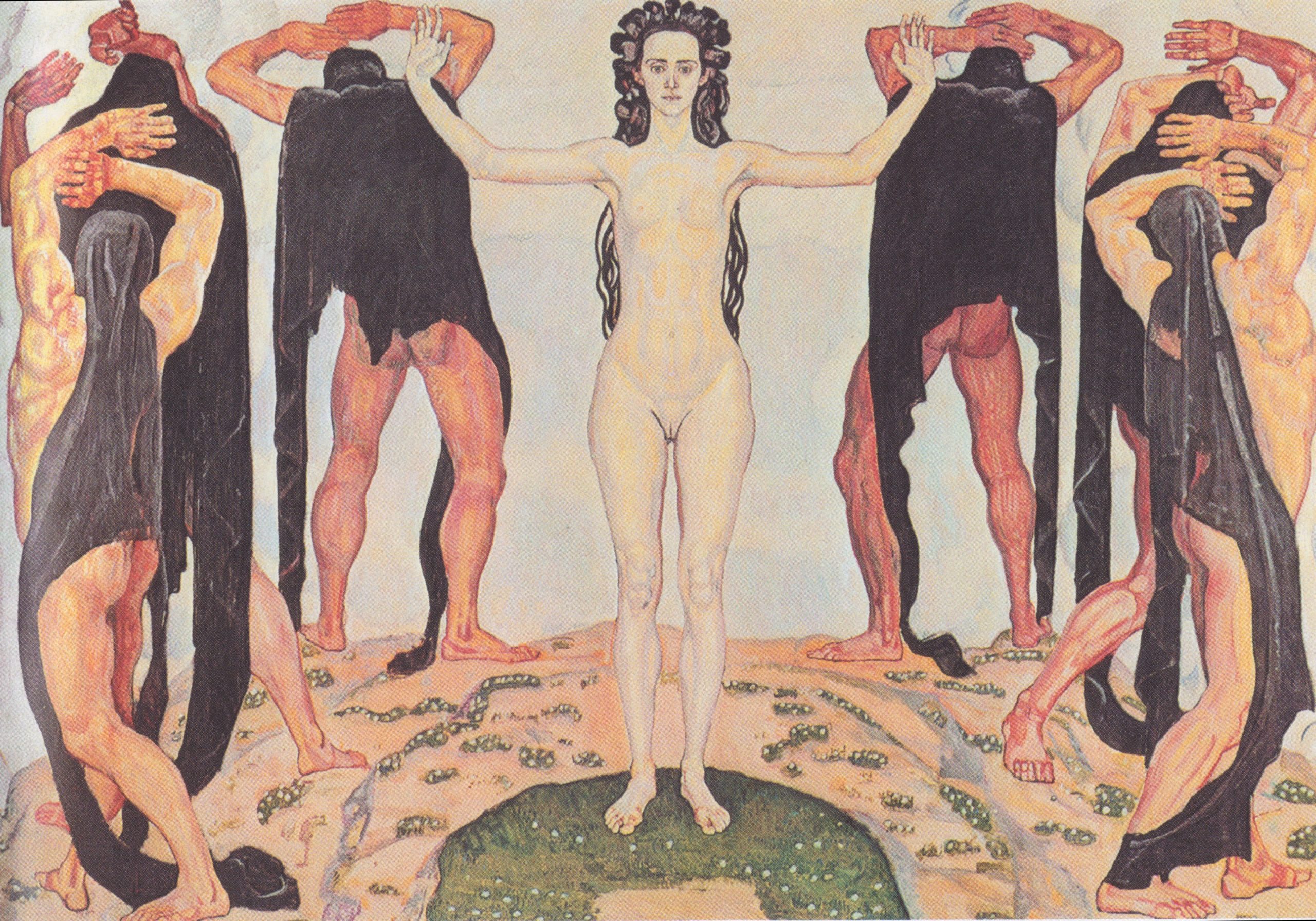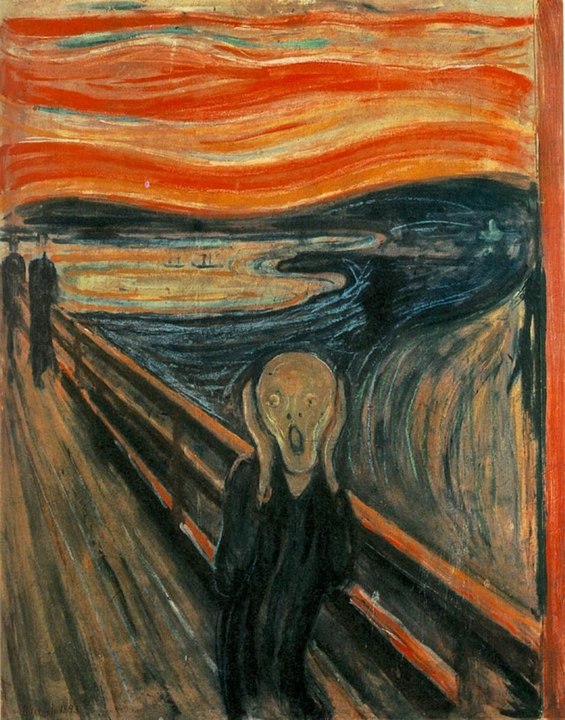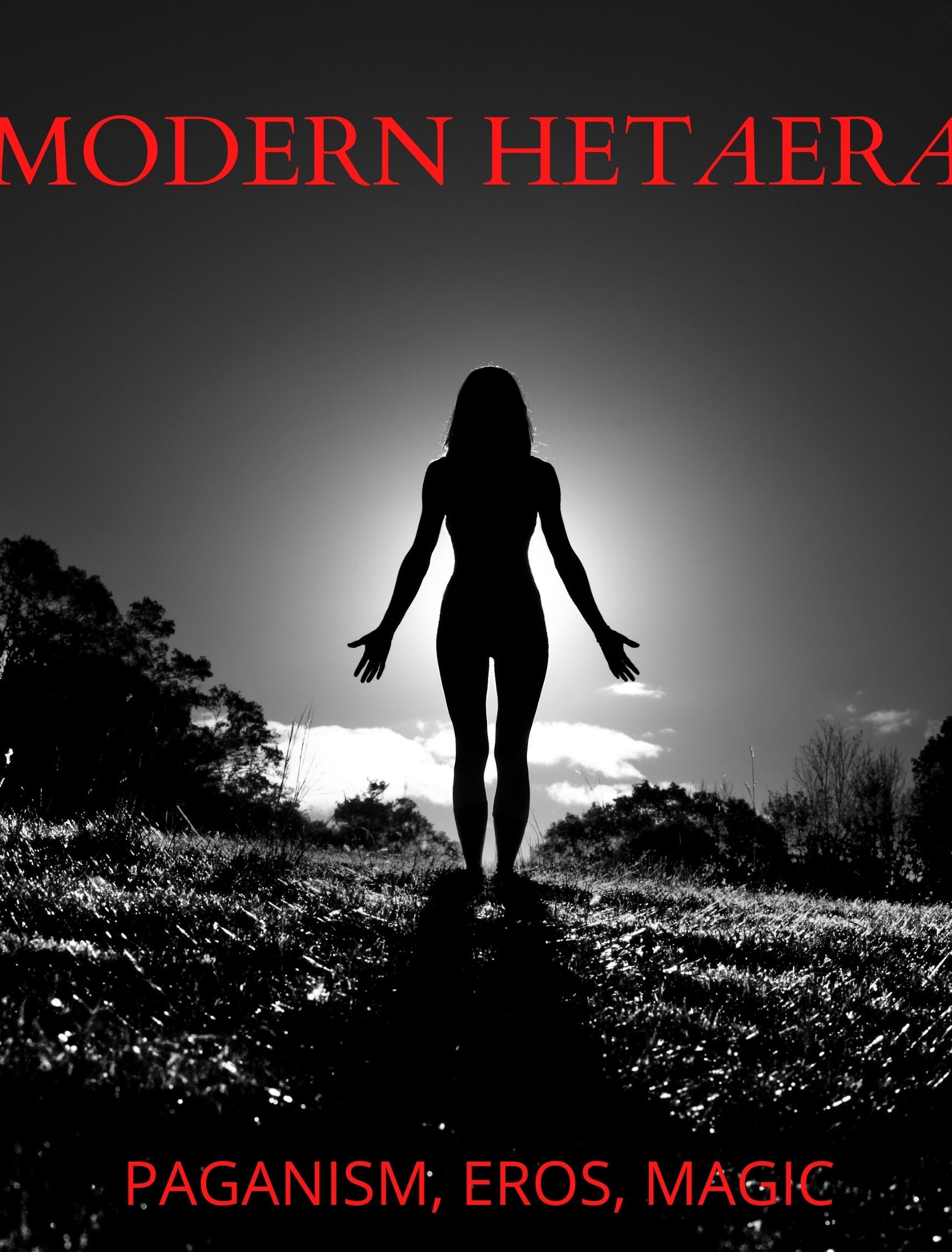Krist, Death and Resurrection
Breathe easy, my friends…but yes, I am referring here to the cross as a Christian symbol and I am aware that many occultists, neo-pagans, esotericists etc. have a very negative attitude towards Christianity and go into defense-mode as soon as they hear/read Christian vocabulary. We are not talking intellectual or sophisticated criticism but polemics and emotional response. There may be good reasons for this like bad experiences with Churches but such hasty rejection certainly hinders productive engagement with a central pillar of Western (incl. occult/esoteric) culture. Remember the dictum: If it is too strong, you are too weak. Now, should you have such issues, maybe take inventory and consider what your real trouble is here and why this holds such a power over you. To be clear, I am absolutely opposed to any form of fanaticism or fundamentalism (especially religious). And in case you have not gathered this from other writings and sources yet: the Kosmic Gnostic current is essentially anti-monotheistic and regards Christendom in particular as the central carrier of the Spirit’s (logos) triumph which makes us their firmest opponent. This adversarial position led us into deep investigations of the nature of Christianity in its many currents, however, and to utilize and subvert their methods/instruments (e.g. within the Gnostic sacramentalism of the Ecclesia Gnostica Aeterna). Know your enemy well they say and we do but we also can find within the vast and often beautiful writings and teachings of Christianity echoes of earlier traditions. In the Christ-myth we can find traces not only of Christianity’s pagan roots, the mystery cults and so on (well known by now especially within esoteric circles) but also symbolism that implies the original supremacy of the Soul and its experience of the living All.
So, with Good Friday coming up, I am contemplating once again the ‘imitation of Christ’ as it relates to the crucifixion. I realized that I already initiated this as a topic of my musings with previous posts: to step on the path and follow Jesus to the ultimate ek-stasis of self-sacrifice. To ‘follow’ Christ has been transferred into ‘imitating’ Christ in Christian theology early on. Now I know that a path of humiliation and physical pain only sounds ecstatic to the truly masochistic but on the one hand, the gospels are not to be taken too literal (so do not sharpen the nails yet – although there is a lot to be said for utilizing pain to reach ecstatic states) and on the other hand, the central aspect of ecstasy in our context here is again the liberation of the Soul from the tyrannic Spirit. Which is exactly what takes place on the Cross. Compare Matthew 27:50: “And when Jesus had cried out again in a loud voice, he gave up his spirit.” This clearly describes the culmination of an ecstatic state and the liberation of Soul and body from Spirit, which in turn indicates the death (and sacrifice) of the old spirit-ruled Self. It is not, however, the logos of ‘God’ but the daemonic Krist that will then resurrect. And it is this ‘Imitatio Kristi’ that the Kosmic Gnostic needs to pursue! As eloquently put forth by our Hierophant David Beth:
Like the God who rises from Death, initiates of the pan-daemonic chthonic Gnosis must sacrifice their I-dentity, their false individuality on the cross and resurrect on the spinning wheel as the Faceless God, the true individual whose real center is not the spirit-ual I of profane Identity and self awareness but the Soul Mirror within the Black Cathedral; (…) The man and world of spirit must die so the Man and World of the Soul can rise again; the world must be transformed back from the skeletal fixated illusion of the Law into the pandaemonic All of polarity and rhythm.
David Beth, “Introduction” to The Faceless God by Dr. Tomas Vincente
This transformation lies still underneath the events described in the Gospels. The eclipse that covers Calvary, if not the whole world, during the last hours of Jesus’s crucifixion has been read by Christians as a sign simply of immanent death, of God’s wrath, of pre-shadowing the Last Judgment, of the absolute isolation and angst of Jesus. The Kosmic Gnostic, however, instinctively recognizes the maternal darkness that embraces the Benighted and initiates the ecstatic climax (i.e. death) of Christ at the ninth hour. In the older canonical gospels of Mark and Matthew this is accompanied by a loud (ecstatic?) scream (in contrast to the rather calm statement of John 19:30, which has its own interpretative value though). In both texts it is also mentioned what I see as a representation of the disruption of the Spirit-imposed world, i.e. the splitting of the temple curtain (Mark 15:38, Matthew 27:51). Even more significant, Matthew includes the earth-shaking resurrection of “holy people”, i.e. the dead (compare Matthew 27:51-52). While Christians might understand these signs as the victory of God/Christ over the old religion of the law, Judaism, both religions follow the same ‘God’/Spirit and we, the Kosmic Gnostics, know that it is HIS world that dies on the Cross.

With the example of the eclipse at the crucifixion one can also illustrate how Christianity throughout history moved further and further away from symbolic thought and understanding, instead focusing on historic facts (e.g. trying to figure out the historical accuracy of a three-hour-eclipse). This process also led to a typical mistake of linear, logocentric thought: the understanding of a symbolic event as ‘once’ and its stepchild, the repetitive return (which only appears cyclical). It culminates in a Protestantism where the Eucharist becomes nothing more than the ‘remembrance’ of the event. (But even a devotion to the Eucharist as transubstantiation as in Catholicism imitates merely on the surface).
Most of us know that Christ embodies the dying and resurrecting gods that have gone before. Therefore, the Easter events are the return in new form, and what they describe is the central and most difficult act of our path, the Self-sacrifice. As I have written before, we have to truly hate our (spirit-ual) life to move forward on this path as it leads from leaving our old life on the exterior (leave our families and friends to follow the Christ to Jerusalem), which can still be done quite easily from a self-centered position, to completely shedding our old self, incl. all that we held true (on the Cross at Golgotha). Only in the rarest of cases does this happen ‘once’ / ‘at once’. For most it is instead a gradual process of following this path, imitating Christ, again and again, always in (slightly) new form. And by now you will have certainly understood as well that for the Kosmic Gnostic this imitation of Krist does not merely mean to imitate in order to participate passively in his glory and receive bread crumbs of grace, but our path of Imitatio leads to our own death and resurrection, and we, ourselves, each in their own way become ‘The Anointed’.
Within the Ecclesia Gnostica Aeterna each sacramental rite, each ecstatic act that embeds the symbolic chiffre of the Imitatio allows us to chop away parts of our false identity, e.g. values and ideas that our Spirit-ual Self clings to (and more often than not tries to rebuild again). The glorious resurrection is not bought with a piece of paper (be it money, certificate or charter)! It requires work, investment, time, humility, sacrifice. That is the most obvious meaning of all the pain, humiliation and suffering in the Passion of Christ. There is no sense in a glorification of pain or suffering but they must be recognized as a necessity which cannot be avoided. Which is the problem of many modern occultists in my view and the reason why so many jump from one system to the next. On the one hand, they want the quick fast-food-like individuation or ‘luciferian resurrection’ in one orgasmic event, and on the other hand they want it for as little effort as possible, rejecting any shadows of what they see as ‘slave-mentality’ (while still remaining slaves of the transcendental source in an even more extreme way).
The Imitatio Kristi does not mean to sacrifice old values (that we did not like in the first place) and basically replace them with different or inverted values that are still rooted in the same system or framework (as for example Christianity did with Judaism, Satanism with Christianity etc.) but to break out of the logo-centric, the Spirit/God-ruled world altogether and bring forth/set free our true Soul-identity (as described by David Beth in the quote above). Good Friday, the sorrowful Friday of Christianity is a day of celebration for the Kosmic Gnostic Initiate! The static cross is a reminder of what we set out to overcome – and that is not Death. The ecstatic rite of the crucifixion is neither an ‘atonement’ nor a necessary evil one has to endure to conquer death in a false notion of reaching eternal duration/immortality. On the contrary, it is the individual attack on the transcendent Spirit/logos/God by means of ‘death’. It is the transformative act of true self-sacrifice. To repeat: Imitatio Kristi must lead to becoming Krist! And He is not the pained, pitiful Christ of Christianity but, as David Beth has intimated, “the ecstatic Krist of the spinning wheel, the daemonic Son of the Great Mater who slew the false Father through his heroic death on the cross.”1David Beth, private communication to Jessica Grote, 2015


